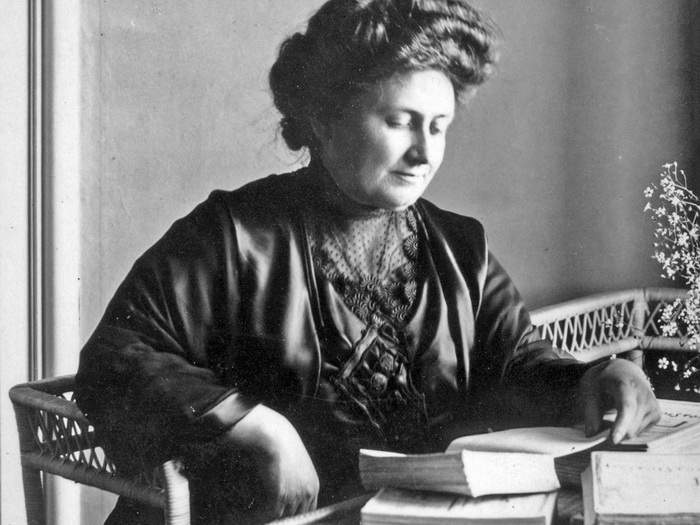About Maria Montessori

Maria Montessori was born on the 31st August 1870 in the town of Chiaravalle, Italy. Her father, Alessandro, was an accountant in the civil service, and her mother, Renilde Stoppani, was well educated and had a passion for reading.
The Montessori family moved to Rome in 1870 and in 1871 the young Montessori girl enrolled in the local state school. Breaking conventional barriers from the beginning of her education, Maria initially had aspirations to become an engineer.
When Maria Montessori graduated secondary school, she became determined to enter medical school and become a doctor. Despite her parents’ encouragement to enter teaching, Maria wanted to enter the male-dominated sphere of medicine. After initially being refused entry, Maria was eventually given entry to the University of Rome in 1890, becoming the first woman to enter medical school in Italy. Despite facing many obstacles due to her gender, Montessori qualified as a doctor in July 1896.
Soon after her medical career began, Dr Montessori became involved in the Women’s Rights movment. She became known for her high levels of competency in treating patients, but also for the respect she showed to patients from all social classes. In 1897, Dr Montessori join a research programme at the psychiatric clinic of the University of Rome, as a volunteer. This work initiated a deep interest in the needs of children with learning disabilities. In particular, the work of two early 19th century Frenchmen, Jean-Marc Itard, who had made his name working with the ‘wild boy of Aveyron’, and Edouard Séguin, his student. Montessori was appointed as co-director, of a new institution called the Orthophrenic School.
At the age of twenty-eight Montessori began advocating her controversial theory that the lack of support for mentally and developmentally disabled children was the cause of their delinquency. The notion of social reform became a strong theme throughout Maria's life, whether it was for gender roles, or advocacy for children.
In 1901 Montessori began her own studies of education philosophy and anthropology, lecturing and teaching students. In this period, the development of Rome meant that children were left at home as their parents worked. The number of children needing a guide and role model presented Maria with an opportunity to work with children with normal development and push her ideas into the mainstream. Dr Montessori opening her Casa dei Bambini in Rome, in1907 bringing some of the educational materials she had developed at the Orthophrenic School.
Dr. Montessori put many different activities and other materials into the children’s environment but kept only those that engaged them. What she came to realise was that children who were placed in an environment where activities were designed to support their natural development had the power to educate themselves. By 1909 Dr Montessori gave her first training course in her new approach to around 100 students. Her notes from this period provided the material for her first book published that same year in Italy, appearing in translation in the United States in 1912 as The Montessori Method, and later translated into 20 languages.
A period of great expansion in the Montessori approach now followed. Montessori societies, training programmes and schools sprang to life all over the world, and a period of travel with public speaking and lecturing occupied Dr Montessori, much of it in America, but also in the UK and throughout Europe.
Having long held the ambition to create her own permanent, long-standing centre for research and development. Montessori was held back by the rise of fascism in Europe. Montessori schools were closed by Nazis and both books and effigies were burned. In 1939, Maria and her son Mario moved to India to lecture, initially intending to travel for only three months, the trip lasted seven years, as the outbreak of war, saw Mario was interned and Maria put under house arrest, as Italian citizens. In India, Maria trained over a thousand Indian Teachers. Returning to Europe, Maria addressed UNESCO in 1947 with the theme of Education and Peace and ultimately receiving her nomination for Nobel Peace Prize in 1949. Maria died in 1952, in the company of her son Mario, to whom she bequeathed the legacy of her work.


